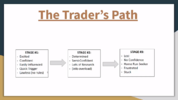- Joined
- 25 July 2021
- Posts
- 857
- Reactions
- 2,153
After seeing a couple of people mention starting out learning to trade in their posts, it got me interested in how people start to learn trading these days and what their experiences were. If anyone is willing to share their experience it could be helpful for others.




